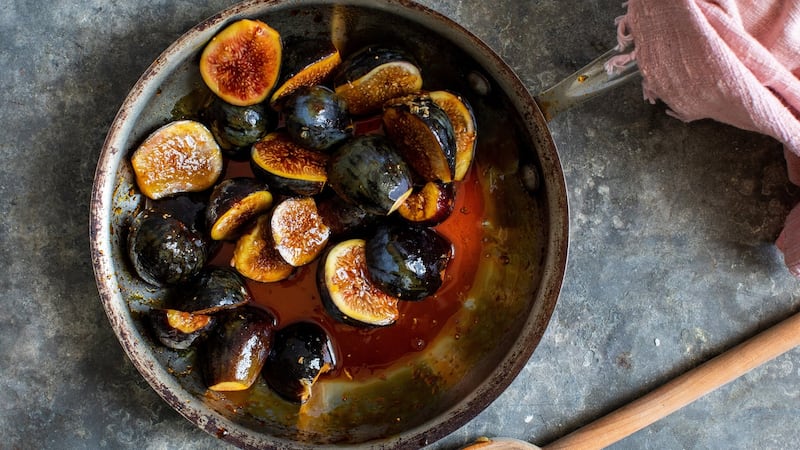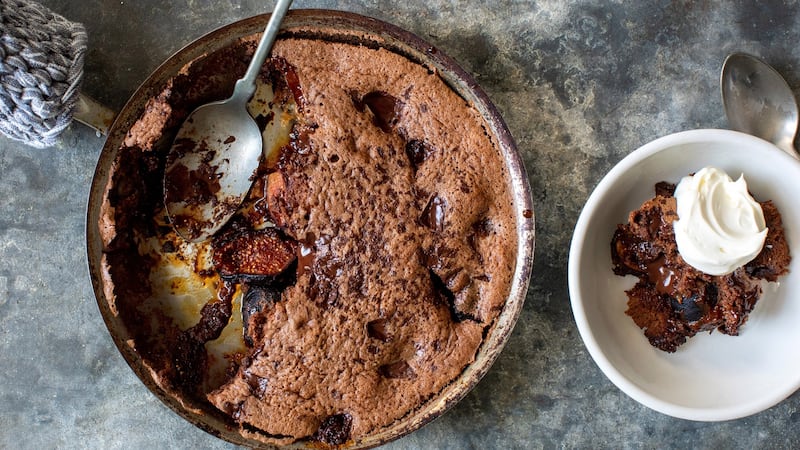"Although I could not quite say that figs are my favourite fruit," wrote food writer Jane Grigson, "they are the fruit I most long for, that I have never had enough of."
Grigson, who died in 1990, found the climate of her native 20th-century Britain, which allowed fig trees to grow but without giving any fruit to speak of, frustratingly tantalizing.
I can’t blame her. Fig trees around the Mediterranean are so productive that they are often left with a heavy load of fruit practically untouched, at least not by humans (birds and worms are quick to get there). I spent many jolly hours of my Mediterranean childhood eating fruit right off a tree that was just outside our front door. Unlike Grigson, I probably had more than enough figs in my time.

Still, I can easily see her point – made also by another colossal writer who dedicated her life to food, Elizabeth David – about figs being the epitome of unattained desire in Britain. "To eat figs off the tree in the very early morning," David wrote, "when they have been barely touched by the sun, is one of the exquisite pleasures of the Mediterranean."
I actually love fresh figs after they have had a fair bit of “touching by the sun.” I find their sweetness and figgy-ness bumped up by the continual warmth, just as you experience a tomato differently after it has been sitting in the sun. The effect of this heat, combined with the overconsumption of figs, makes me want to run to the kitchen.

Salads are the easiest way to go. Leaving the figs as they are, assuming they are seriously ripe and unctuous, and simply slicing them and tossing with crisp bitter salad leaves and aniseedy herbs, such as basil or tarragon, is foolproof. You’d need to dress your salad with acidity and extra sweetness – when figs are paired with savoury ingredients, their sweetness tends to get slightly lost in the mix – so balsamic vinegar, pomegranate molasses, maple syrup or honey should probably feature in the dressing.
If the figs aren’t in their absolute prime – and even if they are – cooking them is your next option and one I highly recommend. Throwing them into just-made caramel with shaved citrus zest and thyme, then taking them off the heat after only a couple of minutes, will give them that extra sweetness I mentioned, alongside the complex bitterness of burnt sugar.
You can leave the figs like that, semi-cooked, or put them in the oven for a few minutes to go completely soft. They can be put to a number of tasks: simply sprinkled with sheep’s cheese to make a delicious starter, or mixed with soft herbs and roasted celeriac or sweet potatoes, then dressed with lemon juice and garlic oil for a substantial cooked salad. Or you could simply serve them as condiments to fatty meats, such as lamb, duck or some cuts of pork.
And then there’s the world of sweet things, which to me seems thrillingly endless where figs are concerned. A good vanilla or chocolate ice-cream, topped with sweet warm figs and their cooking syrup, and a crisp butter cookie, is as close to heaven you can possibly get. Similarly, they are marvellous as accompaniments to custards, for making trifles or other constructed puddings, or baked into generous treats like this week’s warm chocolate sponge cake.
In fact, I can’t really think of any type of dessert I wouldn’t want to add figs to in one form or another. To paraphrase Grigson, although I could not quite say that figs are my favourite fruit, they are definitely the fruit I most long to cook with.

WARM FIG AND CHOCOLATE SPONGE CAKE
Serves four
Ingredients
100g superfine (caster) sugar
2 tbsp dark rum
2 tsp finely grated orange zest, plus 1 tbsp juice (from one orange)
12 ripe black figs (400 grams), tough stems removed and figs halved lengthwise
2 eggs, whites and yolks separated
100ml double cream
35g plain flour
2 tbsp cocoa powder
1 tsp vanilla extract
1/4 tsp flaky sea salt
40g dark chocolate (70 per cent), roughly chopped into one-centimetre pieces
Crème fraîche, for serving
Method
1. Heat the oven to 190 degrees Celsius.
2. Add 50g sugar to a small, ovenproof, high-sided saute pan with a 15-centimetre base (or similar). Cook over medium-high heat, swirling the pan a few times, until the sugar has melted and turned a dark caramel colour, five to eight minutes. Carefully add the rum – it will spit and seize up a little – and cook for another 30 seconds, stirring until combined and thick. Remove from the heat, stir in the orange juice and figs, and set aside to cool.
3. Add the egg yolks to a medium bowl along with 2 tablespoons of sugar. Whisk by hand until pale and thick, about three minutes. Add the cream, flour, cocoa powder, vanilla, salt and orange zest, then whisk until smooth and thick.
4. In another medium bowl, using a clean whisk, whisk the egg whites by hand with the remaining 2 tablespoons of sugar until they form stiff peaks, four to five minutes. Fold gently into the yolk batter, then pour the mixture over the figs in the saute pan (it should cover the figs completely).
5. Sprinkle all over with the chocolate and bake until the batter rises and is cooked through, about 25 minutes. Remove from the oven, divide among four bowls and drizzle with any remaining liquid from the pan. Serve hot, with some crème fraîche alongside. – New York Times










